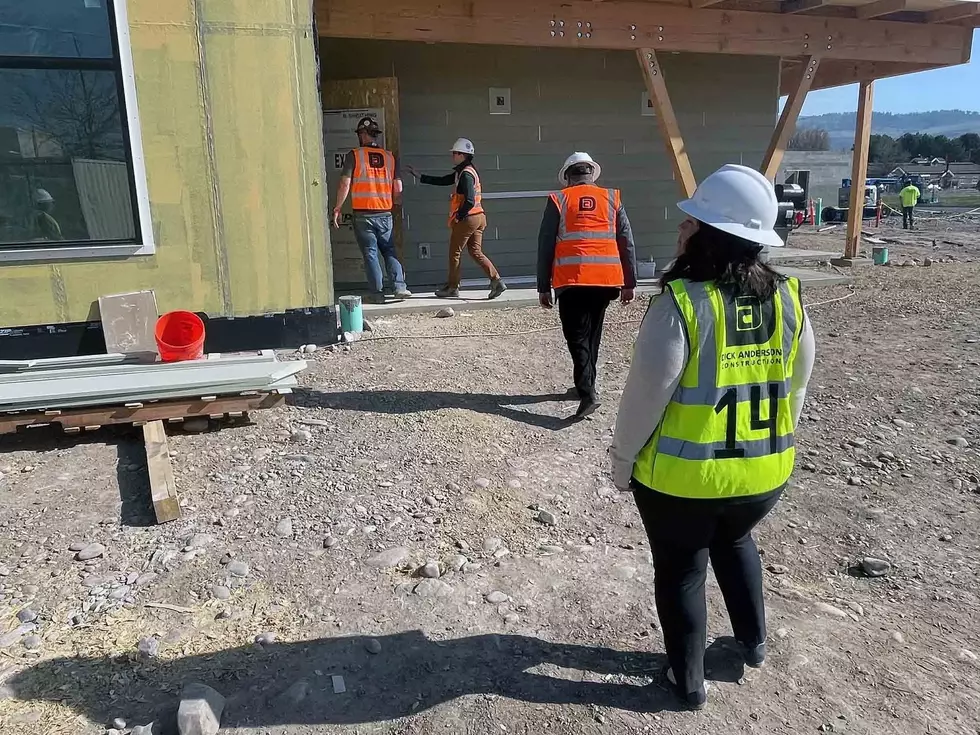
Judge hears arguments on Flathead Forest roads, grizzlies
Laura Lundquist
(Missoula Current) For a second time, wildlife advocates are asking the courts to require the U.S. Fish and Wildlife Service to consider how the spread of logging roads on the Flathead National Forest will affect threatened grizzly bears and bull trout.
On Wednesday, Missoula federal magistrate judge Kathleen L. DeSoto heard almost two hours of oral arguments about how the 2018 Flathead National Forest defines different types of forest service roads, how the new definitions allow roads to proliferate, and whether that threatens two species protected by the Endangered Species Act.
Earthjustice attorney Tim Preso, representing plaintiffs Swan View Coalition and Friends of the Wild Swan, argued that the Fish and Wildlife Service failed in its second biological opinion, issued in February 2022, to assess threats to grizzlies and bull trout created by the Flathead Forest Plan, because it didn’t consider all the existing roads on the Flathead National Forest.
“The science showing that roads continue to displace bears goes all the way back to (1995) and hasn’t changed. The problem is they’ve never applied that science to look at what is the consequence of having all that road network out there in terms of the displacement effect on bears?” Preso said. “The Fish and Wildlife Service has never grappled with that issue to this day.”
Roads pose a threat to grizzly bears because they increase the risk of human-bear conflict and displace bears, forcing them to move away from good habitat. To minimize the threat, the previous Forest Plan and Forest Service Amendment 19 required that open-road density be limited to 1 mile per square mile and total-road density, including unused roads, be limited to 2 miles per square mile in grizzly bear habitat. Also, within each bear management unit, the area that could contain maximum open-road and total-road density was 19% each.
Under the previous Forest Plan, the total-road density calculation didn’t include “decommissioned” roads, because such roads are reclaimed and restored to a more natural state, so they are no longer drivable.
But in 2018, the new Flathead Forest Plan changed the total-road density calculation, saying “impassible” roads also didn’t need to be included. However, the Forest Service renders roads “impassible” by making the first 50 to 300 feet undrivable, while the rest of the road remains, relying only on the passage of time to remove it. So Preso argued impassible roads can still impinge on grizzly bears and should be counted in the total-road density, because bears avoid them and people can and do access them illegally, unlike decommissioned roads.
“The Fish and Wildlife Service has recognized the science here but hasn’t applied the science to reach a rational conclusion. The science is summarized in the (2022) biological opinion itself, which acknowledges that grizzly bears avoid roads, and they ‘may not choose to use these habitats even long after road closures,’” Preso said. “So we know these roads have a displacement impact just from being on the landscape, because bears learn to associate them with humans and avoid them for that reason, especially females.”
Removing impassible roads from the density calculation also allows the Forest Service to build more roads as long as they make them impassible, Preso said. That allowed the Flathead Forest to approve multiple logging projects in bear country.
In addition, when a road is decommissioned, the Forest Service is required to remove stream culverts, but it’s not required along an impassible road. So the plaintiffs argue the culverts and impassible roads can add sediment to bull trout streams, damaging them, so the roads should be decommissioned so culverts are removed.
DeSoto asked if the plaintiffs would be appeased if culvert removal was required for impassible roads.
Preso said the point was that the Fish and Wildlife Service didn’t address what was happening with impassible roads. Fewer roads are being decommissioned because the agency has less funding, Preso said. So the Forest Service preferentially manages roads as “impassible,” because less work needs to be done and culverts won’t be removed.
U.S. Department of Justice attorney Frederick Turner, representing the U.S. Fish and Wildlife Service, said that culverts don’t need to be removed because the Forest Service has a culvert monitoring plan and can either remove or replace damaged culverts. For that reason, the Fish and Wildlife Service opinion said culvert removal wasn’t required.
In the first lawsuit addressing the Flathead Forest Plan, Missoula federal district judge Donald Molloy supported the culvert monitoring plan but ruled that culvert removal still needed to be addressed.
Both parties noted an internal email from a Flathead Forest planner who questioned the validity of substituting impassible roads for decommissioned roads, saying “I think we’re going to be hearing about this from the plaintiffs and maybe even the judge.”
DeSoto said she didn’t consider the email to be that important except for the fact that it encapsulated the issue with decommissioned roads.
“Is it just lip-service to say ‘we’ll have an incidental-take statement related to decommissioned roads’, while at the same time the Forest Service has moved away from actually decommissioning roads?” DeSoto said. “If you only have to remove a culvert when a road is decommissioned – but we’ve all agreed that we’re not going to decommission roads anymore, we’re going to treat them differently using a different term – is that really satisfying what Judge Molloy wanted to happen in Flathead 1?”
Turner said the plaintiffs underestimated the amount of road closure under the new plan. As to impassible roads, Turner said they are in many ways the same as decommissioned roads, because both kinds of roads are inaccessible to vehicles and “from a biological perspective, the main concern is vehicles on the road.” Making a road impassible also gives the Forest Service more options as to how the road will be closed, be it with boulders, downed timber or other means, Turner said.
“I’d like to suggest there’s not as much daylight between the term ‘impassible’ and the term ‘reclaimed’ under Amendment 19,” Turner said. “Plaintiffs are speculating, suggesting that the Forest Service really only performs the bare minimum that’s necessary. I think we don’t have evidence that that’s going to be the case. Under this revised plan, the Forest Service is obligated to make the roads impassible.”
The plaintiffs said that the U.S. Fish and Wildlife Service has issued two biological opinions so far that were insufficient, so if the judge rules in the plaintiffs’ favor and orders a third biological opinion, there should be some penalty. Preso said the Fish and Wildlife Service took just one year to answer Molloy’s last order, so stopping all logging projects for a year wouldn’t be that disruptive.
But Preso offered an alternative of stopping only those projects that are not yet finalized: Mid-Swan, Dry Riverside and Rumbling Owl. That would allow five to move forward: Lake Five, Bug Creek, Crystal Cedar, Frozen Moose and Taylor Hellroaring. Bug Creek and Frozen Moose each have 13 miles of new logging roads planned, while the Mid-Swan would include 32 miles of new roads.
Turner countered saying no projects should be stopped because if there are errors this time, they’re less serious than in the first lawsuit.
“We’re talking about pieces of the plan, and (the plan) is designed to work as a whole. If you start to take away pieces of the plan, you start to lose the utility. It becomes administratively complicated to determine what’s in effect and what isn’t in effect,” Turner said.
DeSoto said she’d get a ruling out as quickly as possible.
In 2019, the Friends of the Wild Swan and the Swan View Coalition sued Flathead National Forest Supervisor Kurt Steele, the Forest Service and the Fish and Wildlife Service, saying the 2018 Flathead Forest Management Plan was less protective of grizzly bears because it was less restrictive than the previous plan on the amount and density of roads in core grizzly habitat. In addition, the Forest had already planned for logging projects that would add an additional 70 miles of roads.
In June 2021, Molloy ruled that the Forest Service had relied on a 2017 Fish and Wildlife Service biological opinion regarding grizzly bears and bull trout that didn’t address parts of the 2018 management plan. The Fish and Wildlife Service subsequently issued a new biological opinion in February 2022, which made that issue moot.
But in May 2022, the Friends of the Wild Swan and the Swan View Coalition sued the Fish and Wildlife Service, saying the new biological opinion didn’t take a full look at the situation related to roads, so the related incidental take statements, which allow for a certain number of grizzlies or bull trout to be killed, was unjustified.
Contact reporter Laura Lundquist at lundquist@missoulacurrent.com.
Entertaining Street Names You'll Find in Missoula Montana
Gallery Credit: Ashley
More From Newstalk KGVO 1290 AM & 98.3 FM









